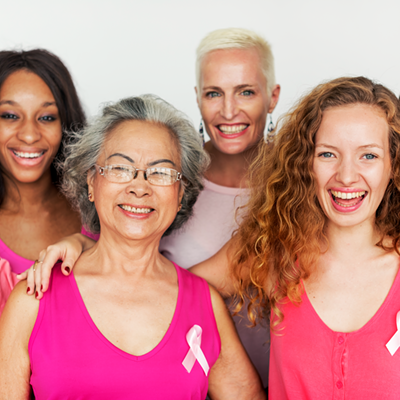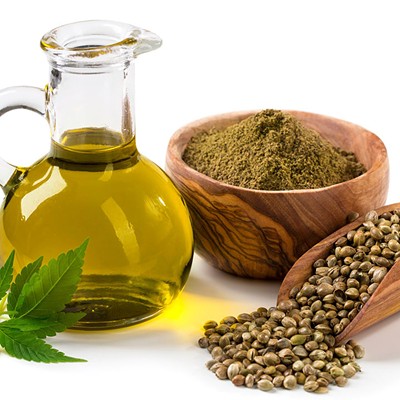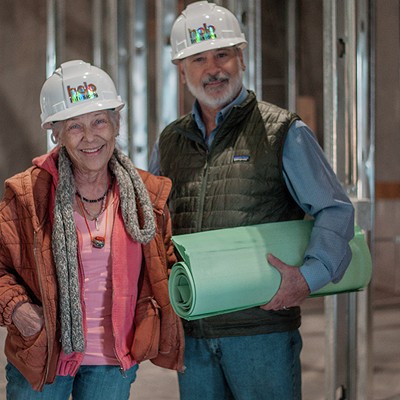October is breast cancer awareness month, an annual campaign to raise both awareness and money for research and treatment. Many organizations participate with fund raising activities such as the Susan G. Komen march, the Association of Flight Attendants “get your pink on,” and Avon cosmetics “Pink Yourself.” Even the National Football League has its “A Critical Catch –Annual Screening” and Dick’s Sporting Goods decorates its stores in pink and donates $250,000 to the National Breast Cancer Foundation every year.
Breast cancer is the second most common cancer in women (skin cancer is first). While the vast majority of those who develop breast cancer are women, this disease also can affect men. The most recent stats available, from 2017, show that 42,000 women and 510 men died of breast cancer that year. It is estimated that there will be 284,200 new cases diagnosed this year. According to the National Cancer Institute, 12% of women in the United States (that’s one in eight) will develop breast cancer during their lifetimes. One in 800 men, .12%, will be diagnosed. While most breast cancer occurs in women over age 55, young women are not immune and 12% occur in women under 45.
So what is cancer? It is the rapid growth of abnormal cells when the DNA in normal cells somehow becomes damaged. Sometimes the body can destroy these aberrant cells, but more often they proliferate and divide more quickly than healthy cells. They form a mass or lump and can spread to other parts of the body invading healthy tissue. There are several types of breast cancer depending on where it is located in the breast.
• Ductal Carcinoma in Situ (DCIS) is an early form of breast cancer. The abnormal cells inside a milk duct have not spread to other parts of the breast or adjacent lymph nodes. Treatment may include surgery and radiation therapy.
• Invasive Ductal Carcinoma (IDC) is the most common type of breast cancer and starts in those cells that line a milk duct. Cancer cells break through the duct wall and spread in to adjoining breast tissue and can then spread to other parts of the body though the bloodstream or lymph system.
• Invasive Lobular Carcinoma (ILC) starts in the milk producing glands, or lobules. This too can spread to other parts of the body. Of interest is that this form of breast cancer will affect both breasts in about 20% of women.
What can be confusing is Lobular Carcinoma in Situ. This is not actually cancer but the precursor and is often found on biopsy or imaging studies other than mammograms for another suspicious lump or mass. There are other, less common, breast cancers also.
Treatment of invasive breast cancers will depend on the type and “stage” of the cancer—how advanced it is and where it may have spread. Different surgeries include lumpectomy (just tumor removal), mastectomy (breast removal) and lymph node removal. Radiation treatment may be an external beam to target either just the cancer site or the entire breast. Systemic treatments include chemotherapy, anticancer drugs that may be given as intravenous medication on a scheduled basis or an oral pill taken daily depending on the particular cancer.
Hormonal therapy is used when the cancer cells have receptors for estrogen or progesterone (a receptor is a site on a cell surface that can bind with a particular substance). Hormone blockers help prevent cancer growth and may be taken for many years.
Then there is “targeted therapy” which kills cancer cells by interfering with specific proteins in the cell that promote growth. Research has opened new avenues for successful treatment and continues to explore ways to treat breast cancer.
The five-year survival rates are approximately 99% for localized disease (breast tissue only), 86% for regional involvement (cancer affecting nearby lymph nodes) and 28% for distant reach (a farther spread such as to bones, lungs and liver). But these statistics change with improved treatment and should be individualized.
There are breast cancer symptoms that warrant evaluation. A lump that is new and not associated with the menstrual cycle (but not all breast lumps are cancer!), changes in the appearance of the nipple, any change or puckering of breast skin, any nipple discharge, and changes in the size or appearance of a breast compared to the other need to be evaluated. Breast pain is NOT a common symptom of cancer.
Breast cancer cannot be prevented but there are ways to reduce the risk of any cancers. Not smoking, physical activity, maintaining a healthy weight and eating vegetables and fruits every day are healthy lifestyle choices.
As with many other illnesses, screening is essential. Monthly self breast exam is recommended by some organizations and health care providers but has not been found to be as effective as clinical exams. Routine mammograms, ultrasound imaging, and MRIs can detect the smallest cancers for earlier treatment. Screening rates vary by state, with Rhode Island taking the prize at 87% and Alaska the worst at 67.3%, as reported by the National Cancer Society. Arizona’s screening rate was 71%, not bad but we can do better. Unfortunately the COVID pandemic halted or delayed many screening exams (and treatment) for numerous people and health care institutions across the country. Hopefully we can get back on track in 2022.
If I may share a personal note: My dear grandmother was diagnosed with breast cancer at the age of 99. Yes, 99! She had a total mastectomy followed by oral chemotherapy, tolerated both and lived alone until she was 102. She had no cognitive decline when she died (not from breast cancer) just before her 104th birthday. So don’t let age stop you from following up on any suspicious symptoms and enjoying good health.
Mia Smitt is a nurse practitioner with a specialty in family practice. She recently retired and settled in Tucson. She is originally from San Francisco.














